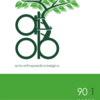Evaluation of patient reported outcome measures and costs of managing osteoarthritis of the hip
Hip, QALY, PROMs, value based healthcare
Published online: Apr 23 2024
Abstract
The number of hospital admissions for a hip prosthesis increased by more than 91% between 2002 and 2019 in Belgium (1), making it one of the most common interventions in hospitals. The objective of this study is to evaluate patient-report- ed outcomes and hospital costs of hip replacement six months after surgery. Both generic (EQ-5D) and specific (HOOS) PROMs of general hospital patients undergoing hip replacement surgery in 2021 were conducted. The results of these PROMs were then combined with financial and health management data. The mean difference (SD) in QALYs between the preoperative and postoperative phases is 0.20 QALYs (0.32 QALYs). The average cost (SD) of all stays is €4,792 (€1,640). Amongst the five dimensions evaluated in the EQ-5D health questionnaire, the ‘pain’ dimension seems to be associated with the greatest improvement in quality of life. As regards Belgium, the 26,066 arthroplasties performed in 2020 might constitute a gain of 123,000 years of life in good health. The relationship between QALYs and costs described in this study posits a ratio of €23,960 per year of life gained in good health. Given that in Belgium more than 3% of the hospital healthcare budget is devoted to hip prostheses, it would seem relevant to us to apply PROM tools to the entire patient population to assess treatment effectiveness more broadly, identify patient needs and, also, monitor the quality of care provided.
